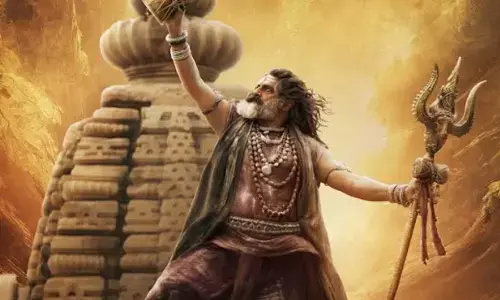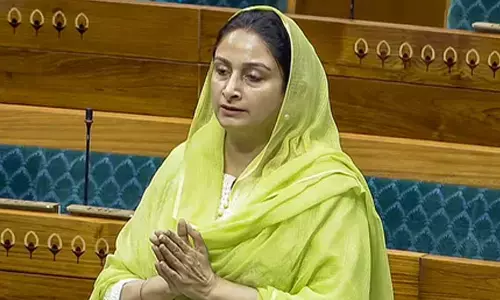[Explained] Why Did Indira Gandhi Impose Emergency In 1975?
 Indira Gandhi
Indira GandhiOn June 25, 1975 President Fakhruddin Ali Ahmed declared a state of internal emergency in India, a proposal which did not have the endorsement of the Union Cabinet whose members came to know of it only later and then ratified it the next day.
On June 25, 1975, President Fakhruddin Ali Ahmed declared a state of internal emergency in India, a proposal which did not have the endorsement of the Union Cabinet whose members came to know of it only later and then ratified it the next day. Thus began at the 21-month period of what is widely believed to be a dark era in India's democracy.
What prompted Indira Gandhi to impose emergency?
Indira Gandhi rode to power in 1971 general elections on the slogan of Garibi Hatao with her faction of the Congress wresting 352 seats in the 518 strong Lok Sabha of the time. A huge personality cult had grown around her in subsequent years, though she was bitterly opposed by the old guard of the Congress.
The Congress government in Bihar in March-April 1974, found itself targeted by a student agitation backed by the veteran Gandhian socialist Jayaprakash Narayan, known as JP. As the movement gathered steam JP called for total revolution asking students, farmers and labour unions to transform Indian society through non-violent means.
In May 1974, the well-known socialist and trade union leader, George Fernandes led a nationwide railway strike paralysing train movement in the country. The Indira Gandhi government came down heavily on the railway strike crushing it, by arresting rail workers across the country.
Allahabad High Court Verdict
Indira Gandhi's adversary in Rae Bareli constituency in the 1971 elections, Raj Narain filed cases of election fraud and misuse of state machinery for election purposes in a petition against her in the Allahabad High Court. Raj Narain was represented by the well-known lawyer Shanti Bhushan.
On June 12, 1975, Justice Jagmohan Lal Sinha of the Allahabad High Court found Prime Minister Indira Gandhi guilty of the charge of misuse of government machinery for her election campaign and declared her election null and void. The Prime Minister was unseated from her seat in the Lok Sabha and was banned by the court from contesting any election for an additional six years.
Indira Gandhi challenged the Allahabad High Court decision in the Supreme Court, but Justice VR Krishna Iyer upheld the High Court judgement on June 24, 1975.
The Supreme Court, however, permitted Indira Gandhi to continue as prime minister while her appeal was pending. Meanwhile, the movement against her gathered steam as JP and Morarji Desai gave a call for daily protests against the government.
At a massive rally in Delhi JP declared that a police officer must reject the orders of the government if the orders are found to be immoral which was what Mahatma Gandhi had said during the freedom struggle. JP's statement was interpreted as incitement to rebellion.
Emergency
Promptly, Indira Gandhi prevailed upon Fakhruddin Ali Ahmed to proclaim a state of emergency and within three hours power supply to all major newspapers was cut off and several opposition leaders arrested. An iconic cartoon by the great Abu Abraham in The Indian Express on the imposition of Emergency by a pliant Fakhruddin Ali Ahmed, sitting in a bathtub and hastily leaning to sign the proclamation, is remembered to this day:
Historic cartoon on Emergency by Abu Abraham (Indian Express). President Fakhruddin Ali Ahmed from bathtub signing Indira Gandhi's Ordinance pic.twitter.com/K5nTwbgHl1
— J Gopikrishnan (@jgopikrishnan70) June 25, 2017
The rationale given by the Indira Gandhi government to the imposition of national emergency was threats to internal security after a war with Pakistan. Further the government said that the economy was in a bad shape on account of the war, drought and the 1973 oil crisis.
The Indira Gandhi government claimed that the protests and strikes of the opposition had paralysed government functioning and had also impacted the economy. It is widely believed that it was the former chief minister of West Bengal, Siddhartha Shankar Ray who guided Indira Gandhi in the matter and told her how democratic freedoms could be suspended within the broader scope of the Constitution.
Scores of opposition leaders were arrested including Jayaprakash Narayan, Morarji Desai, Atal Bihari Vajpayee, Lal Krishna Advani, Arun Jaitley, Raj Narain, Vijayaraje Scindia and others. The Indira Gandhi government also banned the Rashtriya Swayamsevak Sangh (RSS) and Jamaat-e-Islami as also some political outfits.
1977 Elections
On January 18, 1977, Indira Gandhi called for fresh elections scheduled for March and released all political prisoners ahead of the cessation of Emergency. Clearly, she misread the groundswell of resentment growing against her.
The opposition Janata party put up a spirited movement and in the Lok Sabha elections held in March 1977, both Indira Gandhi and her son, Sanjay Gandhi lost their Lok Sabha seats as did all the Congress candidates in Bihar and Uttar Pradesh. From 352, the Congress tally dropped to 153 seats. Of the seats won by the Congress 92 were from AP, Karnataka, Tamil Nadu and Kerala. The Janata party's victory with 298 seats and the support of 47 seats of its allies gave India the first non-Congress prime minister in the form of Morarji Desai.














